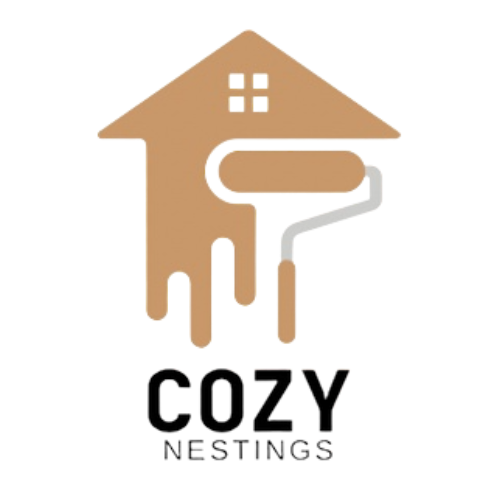

Illuminate Your Ramadan with Elegant Decorations.
Ramadan decorations have become increasingly popular in recent years, as more and more people celebrate the holy month with festive and colorful decor. This trend can be attributed to several factors, including the growing Muslim population in many countries, increased cultural exchange and awareness, and the rise of social media platforms.
In many Muslim-majority countries, Ramadan decorations are a longstanding tradition, with markets and shops offering a wide variety of items, from lanterns and banners to sweets and treats. These markets are often crowded and bustling, with people of all ages shopping for Ramadan supplies.
In other parts of the world, Ramadan decorations have become more mainstream, with major retailers such as Walmart, Target, and Amazon offering a range of items for sale. This has made it easier for Muslims and non-Muslims alike to decorate their homes for Ramadan.
Social media has also played a significant role in the popularity of Ramadan decorations, with people sharing their creative ideas and DIY projects on platforms such as Instagram and Pinterest. This has inspired others to get creative with their own decorations and has helped to spread the word about Ramadan to a wider audience.
Overall, the popularity of Ramadan decorations reflects the growing interest in and appreciation for Islamic culture and traditions. It provides a way for Muslims and non-Muslims alike to celebrate and participate in the spirit of Ramadan.
What is Ramadan Decorations?
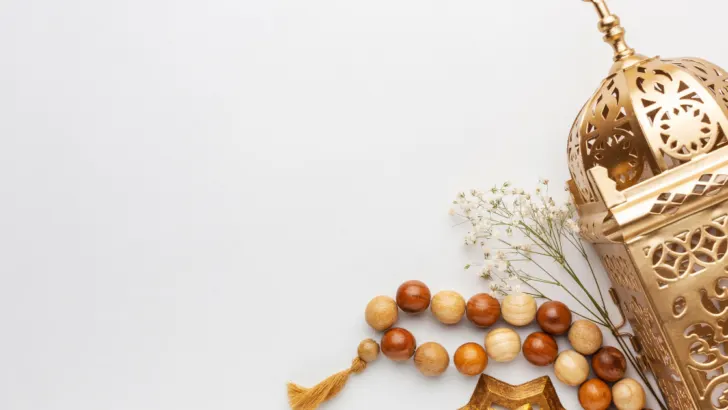
Elevate Your Ramadan Spirit with Stunning Decor.
Ramadan is the ninth month of the Islamic calendar and is observed by Muslims worldwide as a month of fasting, prayer, reflection, and community. Ramadan decorations are typically used to enhance the spiritual atmosphere of this holy month and to create a festive and welcoming environment for family and friends.
Ramadan decorations can include a variety of items such as:
- Lanterns: Lanterns are a traditional symbol of Ramadan, and they are often used to decorate homes and public spaces during this month. These lanterns, also called “fanous,” are typically made of colorful glass or metal and are hung in windows or from ceilings.
- Ramadan banners: Ramadan banners are often hung in homes and mosques to add a festive touch to the atmosphere. These banners can feature Islamic calligraphy, verses from the Quran, or other religious symbols.
- Dates: Dates are an important food item during Ramadan, as they are traditionally eaten to break the fast. Dates are often used as decorations during this month and can be displayed in decorative bowls or platters.
- Lights: Lights are a common decoration during Ramadan, as they symbolize the spiritual light that illuminates the path to righteousness. String lights and other decorative lighting can be used to create a warm and welcoming atmosphere.
- Tableware: Many families gather for iftar, the meal that breaks the daily fast during Ramadan. Special tableware, such as colorful plates and cups, can be used to create a festive atmosphere for these gatherings.
Overall, Ramadan decorations are intended to create a welcoming and festive atmosphere that helps to enhance the spiritual significance of this holy month for Muslims.
When does Ramadan start?
Ramadan is the ninth month of the Islamic calendar, and its exact start date varies each year because the Islamic calendar is based on the lunar cycle. The start date is determined by the sighting of the crescent moon (hilal) that marks the beginning of the new month.
For the year 2023, Ramadan is expected to start on the evening of Thursday, April 20th, 2023, and end on the evening of Saturday, May 20th, 2023, based on astronomical calculations. However, the actual start date may vary depending on the sighting of the crescent moon by local religious authorities. It’s important to note that the start of Ramadan may differ by one or two days in different countries or regions, depending on when the moon is sighted.
When should you install Ramadan Decorations?
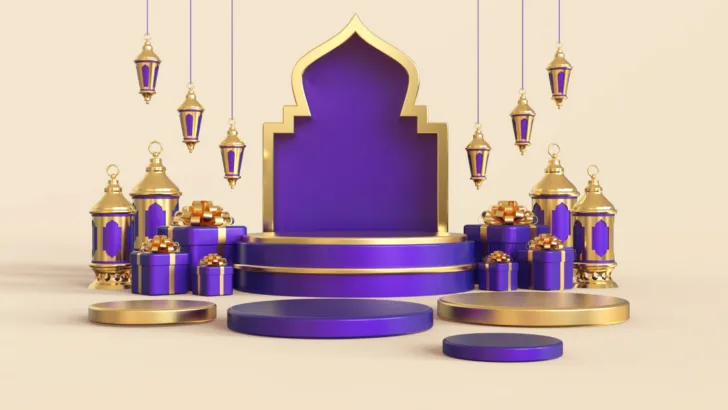
Create a Ramadan Wonderland with Our Decor.
The timing of installing Ramadan decorations can vary based on personal preference and cultural traditions. However, it’s common for many Muslim households to begin decorating their homes a few days before the start of Ramadan.
In many Muslim-majority countries, public spaces and buildings are also decorated with Ramadan decorations and lighting, which are typically installed a few days before the start of the month.
It’s worth noting that some Muslims also choose to refrain from decorating for Ramadan in a lavish manner, as the focus of the month is primarily on spiritual reflection, prayer, and charitable giving rather than material possessions or displays.
Ultimately, the timing of installing Ramadan decorations should be guided by personal preference, cultural traditions, and the individual’s goals and intentions for the month of Ramadan.
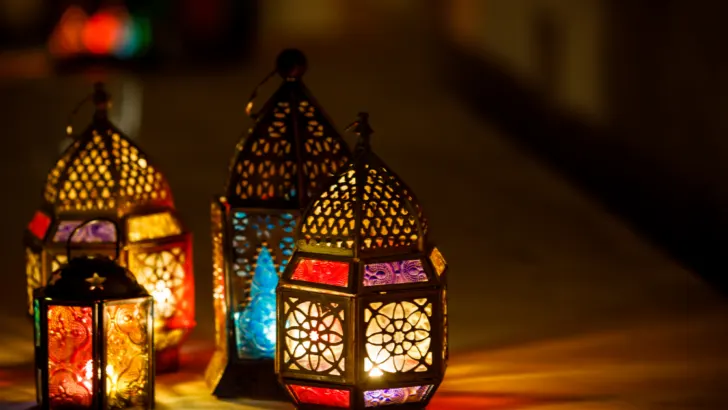
Cherish the Moments with Ramadan Decor.
What is the best color for Ramadan Decorations?
There is no one “best” color for Ramadan decorations, as the choice of colors can vary widely depending on cultural traditions and personal preferences.
However, some colors are commonly associated with Ramadan and Islamic culture, and may be used in decorations during the month. These colors include:
- Green: Green is considered a sacred color in Islam and is often associated with nature and growth. It may be used in decorations to represent renewal, hope, and spiritual growth during Ramadan.
- Gold: Gold is often associated with celebration and luxury, and may be used in decorations to represent the specialness and significance of the month.
- Blue: Blue is a calming and peaceful color that may be used in decorations to represent serenity and contemplation during Ramadan.
- White: White is a symbol of purity and simplicity, and may be used in decorations to create a clean and elegant atmosphere during the month.
Overall, the choice of colors for Ramadan decorations is a personal preference, and it’s up to each individual to decide which colors they would like to use to create a festive and meaningful atmosphere in their home or community.
Is there a specific symbol for Ramadan Decorations?
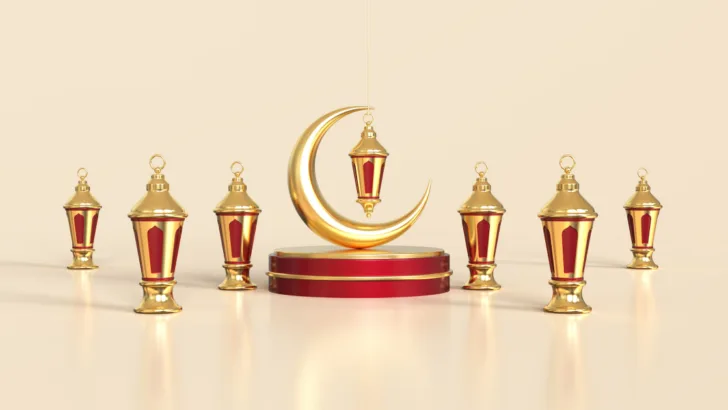
Transform Your Home into a Ramadan Oasis.
Yes, there are several symbols that are commonly associated with Ramadan and may be used in decorations during the month.
- The crescent moon: The crescent moon is a symbol of the Islamic calendar and is often used in Ramadan decorations to represent the beginning and end of the month.
- The star: The star is a symbol of guidance and may be used in decorations to represent the spiritual guidance and illumination that is sought during Ramadan.
- Lanterns: Lanterns are a common decoration during Ramadan, particularly in the Middle East and North Africa. They may be hung or placed around the home and are often illuminated during the evening hours.
- Calligraphy: Arabic calligraphy is a beautiful and intricate art form that may be used in Ramadan decorations to display verses from the Quran or other religious texts.
- Dates: Dates are a traditional food that is often eaten to break the fast during Ramadan. They may also be used in decorations to represent the importance of food and community during the month.
Overall, these symbols and decorations are meant to enhance the spiritual and cultural significance of the month and create a festive and meaningful atmosphere in the home or community.
Is it forbidden to have Ramadan Decorations?
No, it is not forbidden to have Ramadan decorations. Ramadan is a month of spiritual reflection, fasting, prayer, and charitable giving for Muslims, and decorating the home or public spaces can be a part of the cultural traditions surrounding the month.
However, it’s important to remember that the focus of the month is primarily on spiritual purification and self-discipline rather than material possessions or displays. Some Muslims may choose to refrain from decorating for Ramadan in a lavish or extravagant manner, as it is not the primary focus of the month.
Overall, the nature and extent of Ramadan decorations are up to individual interpretation and cultural traditions, as long as they align with Islamic principles and do not go against the values of the month.
Can you make Ramadan Decorations at home?

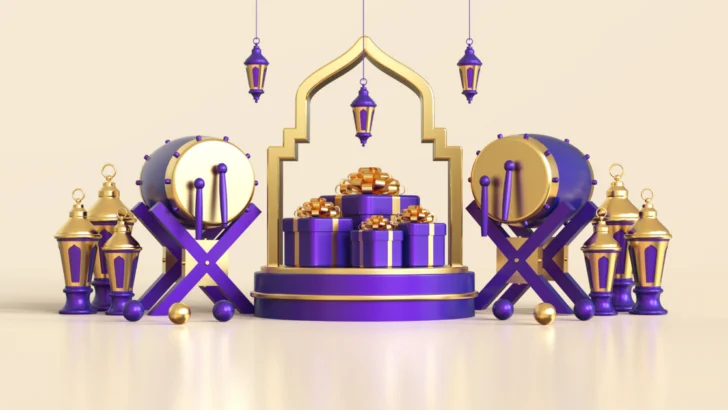
Elegant Ramadan Decor for Your Special Moments.
Yes, you can definitely make Ramadan decorations at home! Many Muslim households enjoy creating homemade decorations for Ramadan as it can be a fun and creative way to involve the whole family in preparing for the month.
Some examples of homemade Ramadan decorations could include:
- Paper lanterns: You can create paper lanterns in various shapes and sizes using colored paper, scissors, and glue.
- Banners and garlands: You can make banners and garlands by cutting out shapes and letters from colored paper or fabric and stringing them together.
- Calligraphy art: You can create calligraphy art by writing out verses from the Quran or other Islamic sayings using calligraphy pens and paper.
- Ramadan-themed cookies: You can bake Ramadan-themed cookies and decorate them with icing and other edible decorations.
- Origami decorations: You can create origami decorations using colored paper, such as stars, birds, or flowers.
Overall, making homemade decorations can be a fun and meaningful way to get into the spirit of Ramadan and involve the whole family in preparing for the month.
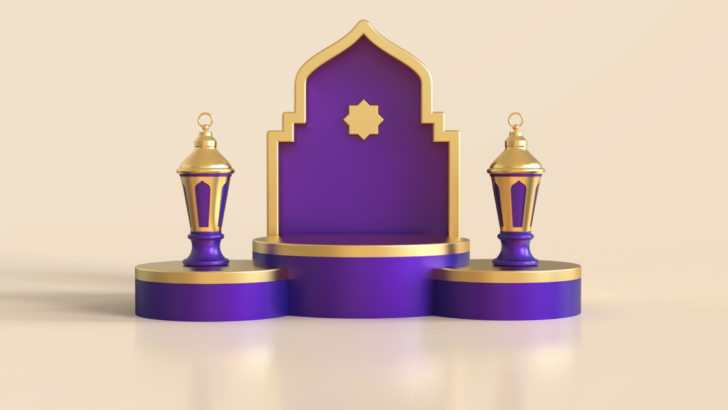
Ramadan Decor: Where Elegance Meets Tradition.
How much will Ramadan Decorations cost?
The cost of Ramadan decorations can vary widely depending on the type and extent of decorations you choose to purchase or make.
For example, if you choose to buy pre-made decorations from a store or online retailer, the cost may depend on factors such as the quality of materials, the complexity of the design, and the location of the store. Some decorations can be purchased for a few pounds, while others may be more expensive.
Alternatively, if you choose to make your own decorations at home, the cost will depend on the materials you use and how many decorations you plan to make. Generally, making your own decorations at home can be less expensive than buying pre-made decorations, but it may require more time and effort.
Overall, the cost of Ramadan decorations is a personal choice, and it is up to you to decide how much you would like to spend. Many Muslims choose to prioritize spiritual reflection, prayer, and charitable giving during Ramadan, and may choose to keep their decorations simple or make their own decorations to save money.
Where can I buy Ramadan Decorations?
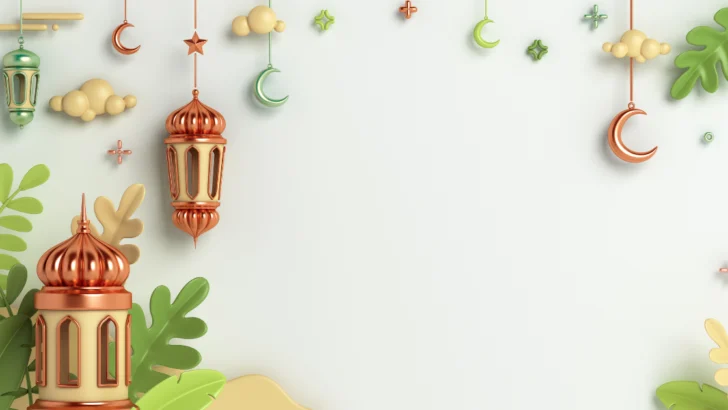
Ramadan Decor Where Elegance Meets Tradition.
There are many places where you can buy Ramadan decorations. Here are some suggestions:
- Online retailers: Many online retailers offer a wide range of Ramadan decorations, including Amazon, eBay, and Islamic Stores.
- Islamic bookstores: Islamic bookstores such as Darussalam and Islamic Goods Direct may carry Ramadan decorations.
- Party stores: Party stores such as Party City and Modefa may also carry Ramadan decorations.
- Local Islamic community centers or mosques: Some Islamic community centers or mosques may have a gift shop or bookstore that carries Ramadan decorations.
- Craft stores: Craft stores such as Dstampss and The Crescent Moon Store may have materials for making your own Ramadan decorations at home.
Overall, the availability of Ramadan decorations may vary depending on your location and the time of year. It’s always a good idea to check with local stores or online retailers to see what options are available.
Can you have Ramadan Decorations anywhere around the house?

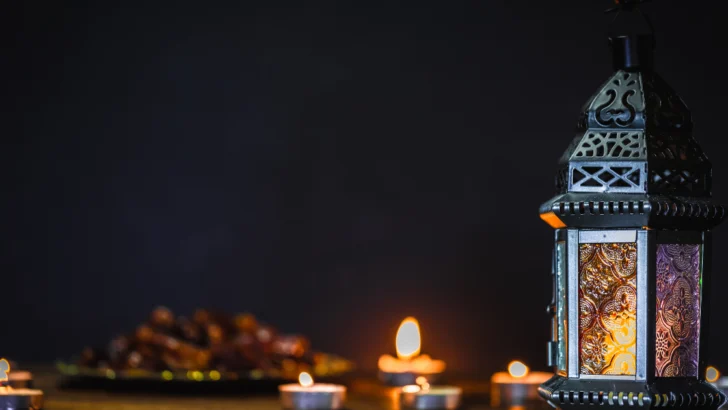
Embrace the Spirit of Ramadan with Personalised Decor
Yes, you can have Ramadan decorations anywhere around the house! The specific locations for Ramadan decorations will depend on personal preference and cultural traditions.
Some common areas for Ramadan decorations in the home may include:
- The living room: This is often the main gathering space for families during Ramadan, and decorating the living room can create a festive and welcoming atmosphere.
- The dining area: As Ramadan involves fasting during the day and breaking the fast at sunset, the dining area is an important space for sharing meals with family and friends.
- The prayer area: Many Muslims create a designated prayer area in their home, and decorating this space with Ramadan-themed decorations can help create a peaceful and reflective atmosphere for prayer and spiritual reflection.
- The front entrance: Decorating the front entrance with Ramadan decorations such as banners, lights, or lanterns can be a welcoming sight for guests and passersby.
Overall, the locations for Ramadan decorations are a personal choice, and it’s up to you to decide where you would like to place them in your home.
What is the opinion of experts when it comes to Ramadan Decorations?

Ramadan A Time for Reflection and Decorations.
There is no one-size-fits-all opinion among experts when it comes to Ramadan decorations, as the nature and extent of decorations can vary widely depending on cultural traditions and personal preferences.
However, some experts suggest that while decorating for Ramadan can be a fun and creative way to involve the whole family in preparing for the month, it’s important to remember that the focus of the month is primarily on spiritual reflection, self-discipline, and charitable giving rather than material possessions or displays.
Therefore, some experts suggest that it’s important to approach Ramadan decorations with a mindful and balanced perspective, and to prioritize spiritual and social values over excessive or materialistic displays. This may involve refraining from lavish or extravagant decorations, and instead focusing on creating a simple, meaningful, and reflective atmosphere that supports the spiritual goals of the month.
Ultimately, the opinions of experts will depend on individual interpretations of Islamic principles and cultural traditions, and it’s up to each person to decide how they would like to approach Ramadan decorations in their own home or community.
We hope you have enjoyed reading our blog and learnt a little more around the topic of Ramadan Decorations. Why not take a look at our blog on Islamic Wall Art for some more inspirational ideas. At our blog, we aim to provide an informative and educational platform in which to learn from. We take great care to ensure that all of our content is thoroughly researched and filled with interesting facts and data to help readers gain a better understanding of the subject better.
I hope this helps! Let me know if you have any other questions about Ramadan Decorations in the comments section below.
